Process is a marketing mix component in the 7Ps of marketing.
The process component serves an important role in how companies deliver their products, the experience customers have with those products, and how a company services their customer’s.
While highly pertinent to service products, process can be applied to many product types. We will look at the process component of the marketing mix in detail.
What is Process?
Process, as a component of the 7Ps marketing mix framework, is the component of the marketing mix that deals with delivery of the company’s product. It is most pertinent to the delivery of service products.
Process encompasses all aspects of service delivery, customer service, as well as the overall customer experience.
Essentially, process is concerned with how you deliver your product to the customer. Then, how you handle servicing the customer during the use of your product.
Below we will go into detail regarding the various areas of the process component.
Types of Process
When evaluating the process component of your marketing mix, it makes sense to look at how you can deliver your products. This aspect can be categorized into the types of process.
Seeing as process is all about how your product is delivered, serviced, and the experience of your customer, it makes sense to assess the various ways to accomplish these areas.
There are various types of processes you can choose from. The types of processes can be categorized as direct activities, indirect activities, electronic processes, and technology processes.
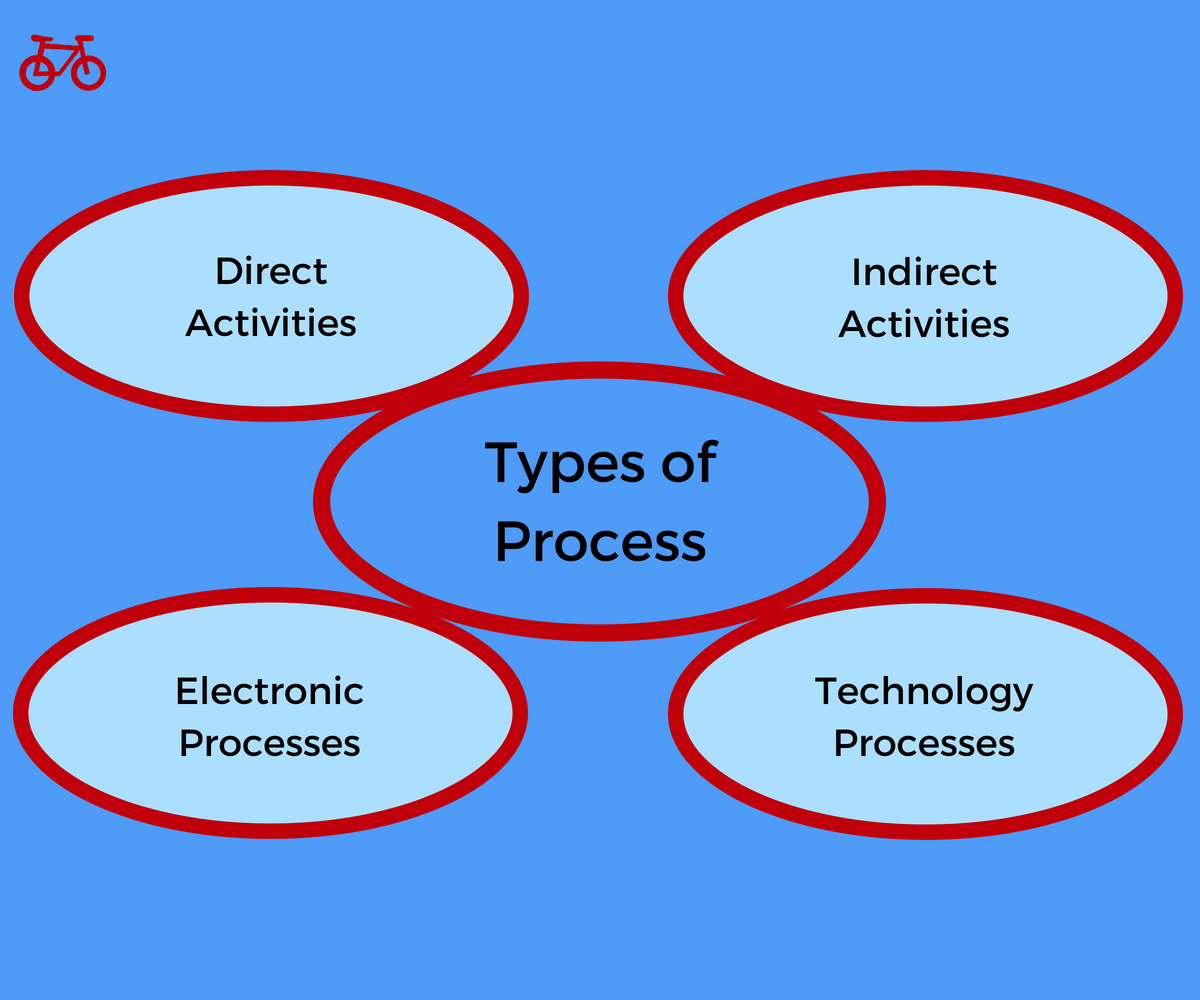
Direct Activities
Direct activities are the activities that a company performs while a customer is using the product. These are activities that bring value to the customer experience, while the customer is experiencing the product.
These activities can include things that make the customers life easier.
Indirect Activities
Indirect activities are the processes and activities that a company performs in the background. At times, this is considered back office activities or support activities.
Indirect activities rely on systems that perform functions that a customer does not see. But, the execution of these activities enhances the customer experience.
Electronic Processes
Electronic processes are the processes that use electronics to enhance the customer experience and bring value to the customer. These processes can include the use of phones or barcode scanners.
The use of electronics improves the delivery of your service with things like QR codes that can auto-populate forms and information. Or, using point-of-sale scanners to speed up a check out process.
Technology Processes
Technology processes are the processes that build products to cater to a customer’s needs. This process includes using manufacturing technology that creates custom products.
A technology process is one which builds products to each individual customer’s needs. This is a process, which can improve the customer experience and be a competitive advantage.
The various types of processes can be used in conjunction or separately. A lot depends on your particular business needs.
What is Process Delivery?
Process delivery is the systems, standards, policies, processes, and constraints that are used to deliver your product to a customer. This delivery is usually performed with the customer present.
The process by which you deliver your product is a key component to the marketing mix, as well as the customer experience. It includes elements of design, deployment, customer service, and company operations.
Components of Process Delivery
Process delivery is an important aspect to the process element of the marketing mix. Thus, there are various components you should consider when building your processes.
Here are a few components of process delivery.
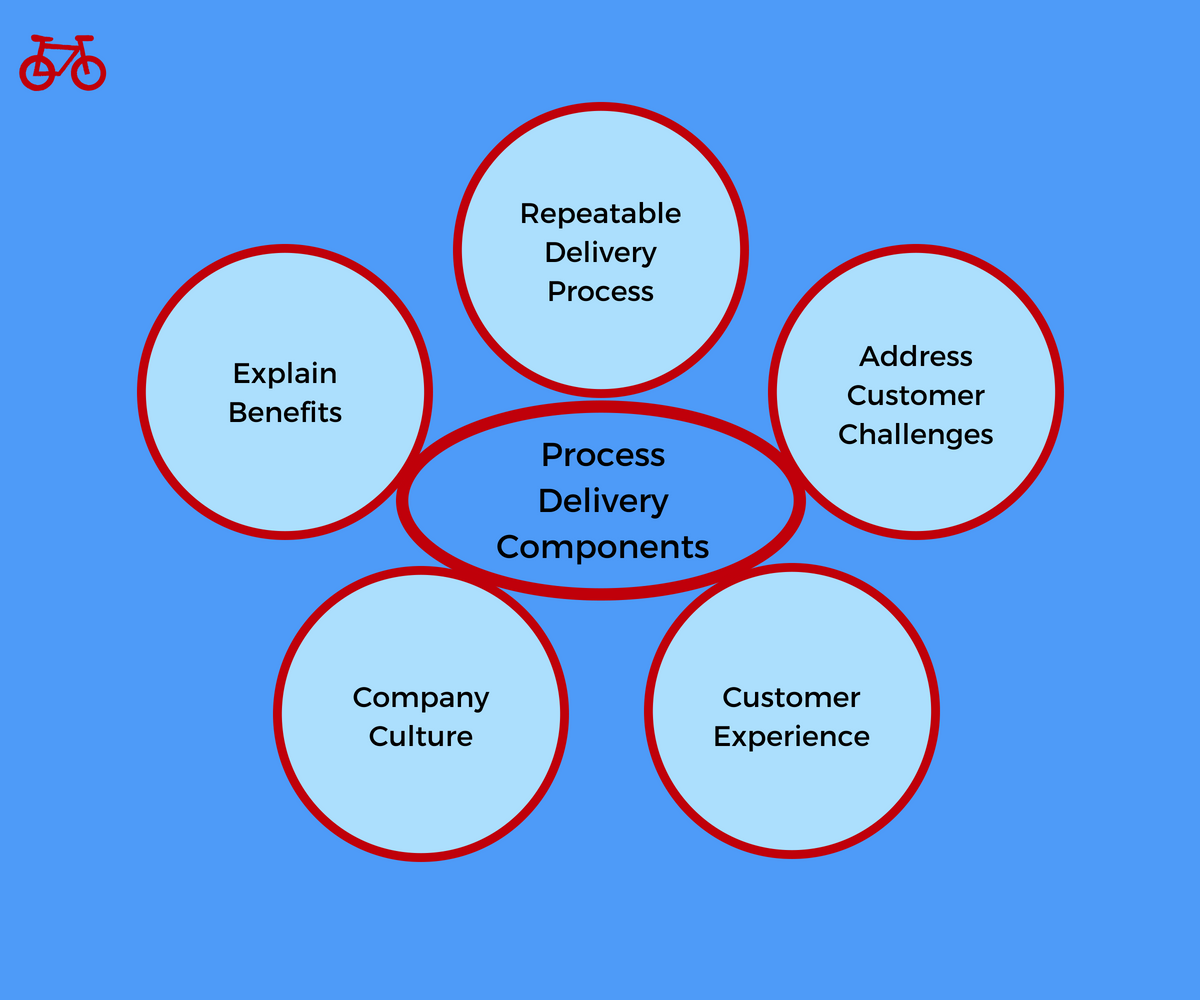
Repeatable Delivery Process
The first element of process delivery is creating a process that is repeatable. This ensures that every customer receives a consistent experience. Also, the customer should know what to expect.
This component serves two purposes. The first, is that a repeatable process is scalable. The second, is that a repeatable process will lend itself to a consistent customer experience.
There are many tools and tactics that can be used to create a repeatable delivery process.
Address Customer Challenges
Ensuring that customer challenges are addressed is an essential piece to the delivery process. This is about creating a feedback loop where the company can understand the challenges being faced by their customers. Then, having the ability to address those challenges.
The various types of processes can be used to address customer challenges. This can contribute to an effective delivery process.
Explain Benefits
Communication is a key element to the marketing mix. Incorporating effective communication in the delivery process can ensure that the company is explaining the products benefits to the customer.
Ensuring that a customer knows what they can do with a product can enhance the customer experience. This also ensures the product is being effectively used by the customer.
Company Culture
Company culture plays a large role in the delivery process. The company culture effects employee engagement and the attitude employees have towards servicing customers.
Thus, creating a positive company culture, that aligns with the delivery process model is essential in establishing an effect delivery process.
Customer Experience
Customer experience is the overall perception your customer has of your product and company. It comes from the interactions they have with your company. The customer experience component of process delivery ensures the systems that are in place create the desired customer experience.
This component means determining the desired experience you would like a customer to have. Then, implementing the systems and processes to effectively deliver that experience.
The delivery process and its components are a big part of the process element of the marketing mix. Considerations need to be made, delivery process models need to be understood, and a deliver process plan should be put into place.
What is Customer Experience?
Customer experience is two components. It is the culmination of all the interactions that a customer has with your company, product, and brand. And, it is the perception a customer has of your company, products, and brand that is the result of their interactions.
The customer experience component of process in the marketing mix encompasses how your customers interact and perceive you company. Processes can be set in motion to create the desired customer experience.
Components of Customer Experience
Now that we have addressed what the customer experience is, it is time to take a look at the components of customer experience. There are various schools of thought on this and we will address some of the most pertinent components to creating a positive customer experience.
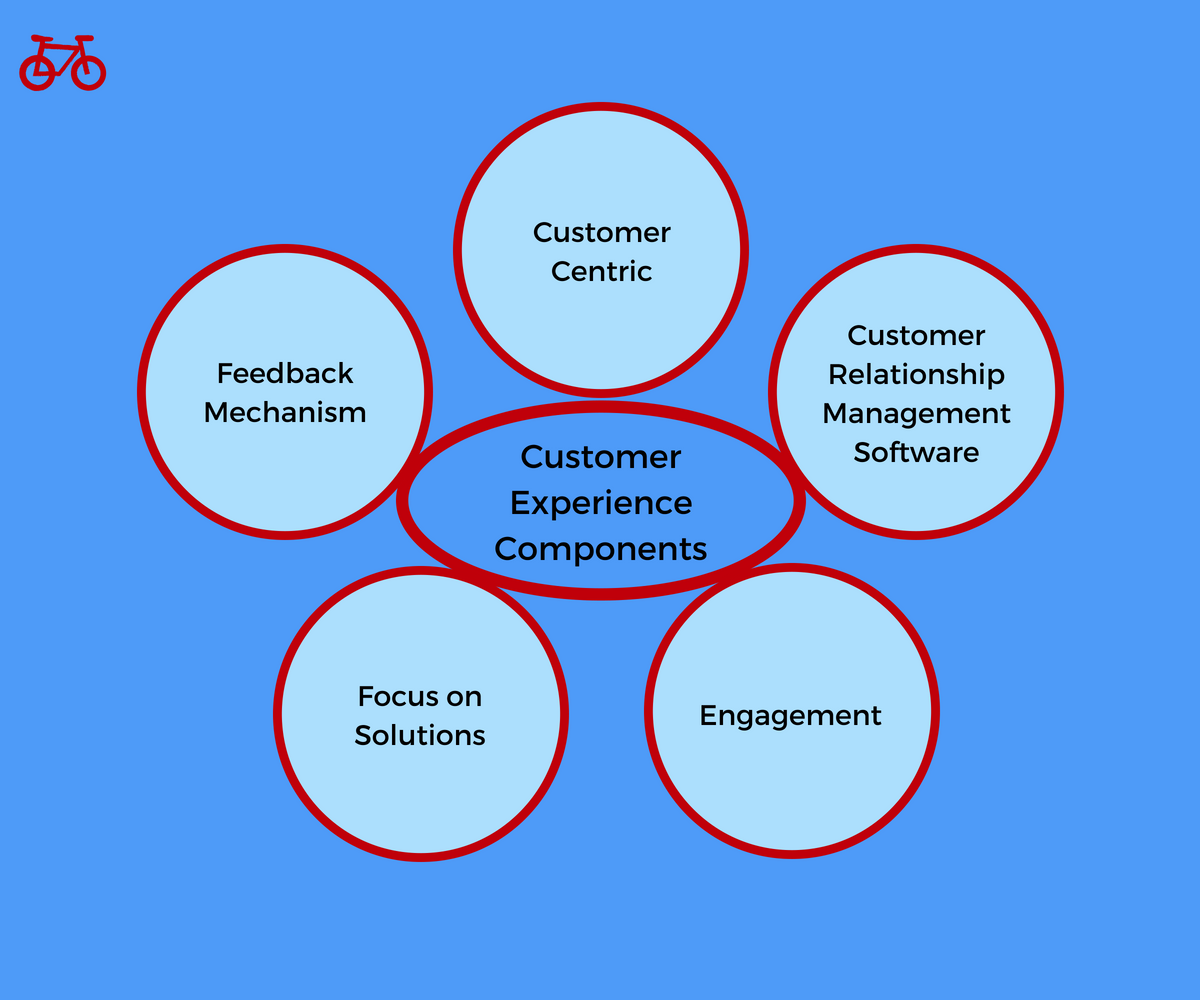
Customer Centric
The first, and arguably the most important component of customer experience, is the idea of being customer centric. A focus on the customer is essential if the goal is to create a positive customer experience.
Being customer centric is about knowing your customer. Knowing what your customer needs. Knowing how you want your customer to experience your product. Then, setting up the processes and tools to control the interactions your customer has with your company. So, the desired outcome is achieved.
Focusing on the customer is not just something to talk about. It is how a company operates.
Customer Relationship Management Software
Having customer relationship management (CRM) software that is robust and can handle your companies needs is essential.
Your CRM is the backbone of the customer experience. It will allow you to process the important data you need to know about your customer. Then, with this data you can build systems and processes to engage your customers. All of which help you build a positive customer experience.
The CRM you choose is not a decision to take lightly.
Feedback Mechanism
Creating some way to receive feedback, process feedback, and act on feedback from customers is a component of the customer experience.
Creating a mechanism for feedback creates a two-way conversation between you and your customer. This conversation allows you to understand the experience of your customer. Then, if the experience needs to be adjusted, you know where and what needs to be adjusted.
The feedback mechanism is a component of the customer experience that creates a conversation between you and your customer.
Focus on Solutions
Customers are going to have problems. This can be problems where products can be built to solve. Or, they can have problems with your company. Creating solutions is the only way to alleviate the problems.
Building a marketing process that focuses on solutions, whether it is solutions in the form of products. Or, solutions to the problems a customer is having with your company. A culture that focuses on solutions is an important component of the customer experience.
Engagement
Engagement is another key component of the customer experience. Creating a process that engages your customer and makes them want to come back to your product and use it, provides more opportunities to affect the customer experience.
Engagement is not just creating a process and system that makes your customer want to engage. It is also about having a company culture that encourages employees to be engaged. Employee engagement with customers will ultimately affect the customer experience.
Customer experience has many components and these are just a few highlights. Now, we will take a look at the various layers of customer experience.
Layers of Customer Experience
Looking at the customer experience in more detail, we can now start taking a look at the various layers of the customer experience. The layers of customer experience are the areas to compartmentalize how to build a winning customer experience strategy.
Below are some important layers of customer experience.
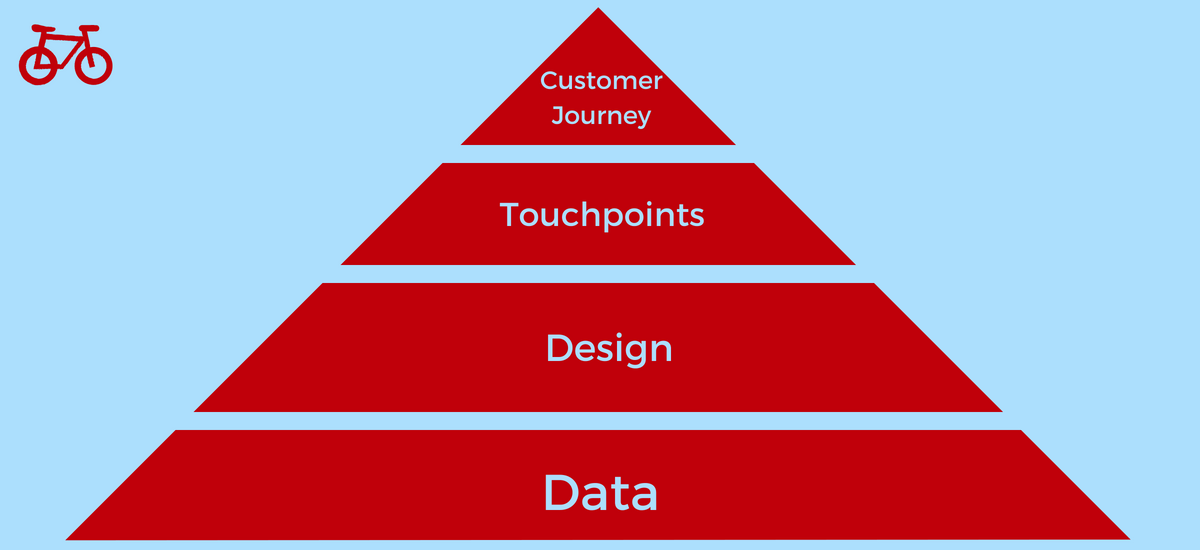
Data
The first layer of customer experience is data. Building a process and system that collects data. Then, has the capability to analyze the data to produce meaningful insights.
This is the base layer to provide information about how to tweak, analyze, and improve your customers experience.
Design
The next layer to the customer experience is the design layer. It is taking the data that is being collected and using that to design the desired customer experience.
The design of the customer experience is crucial to the interactions and perceptions a customer has of your company. The design is about consideration of the customer, then architecting a process that best reflects the customers situation.
The design process is crucial to the customer experience.
Touchpoints
The next layer of customer experience are the customer touchpoints. Using data you collect, then designing a system that reflects the customers situation and needs, you can design the optimal touchpoints a customer needs.
This means when, how, and by whom a customer should have a touchpoint with your company. Each touchpoint is an opportunity to affect the customer experience.
Customer Journey
The last layer of the customer experience is the customer journey. This is the culmination of the data collected, the design of the customer experience, and the touchpoints that are created.
This ultimately leads to the customer journey. And by building a customer journey the matches the customers perception of your product and company will affect the customer experience.
The layers of customer experience compartmentalize the information that is needed to create a positive strategy. Each layer builds on the next creating a usable framework.
What is Customer Service?
Customer service is the process used to support customers in the use of your product and to ensure their overall satisfaction with your company. Customer service is a crucial part of the process component of the marketing mix.
Customer service uses many processes, tools, and tactics to achieve the satisfaction of customers. Ultimately, customer service can become a competitive advantage for customers who do it well.
To dive in a bit further, we will take a look at the components of customer service.
Components of Customer Service
There are various components of customer service. Each component makes up how you build an effective customer service process, which ultimately affects your overall process component of the marketing mix.
Here, we will take a look at some of the components of customer service.
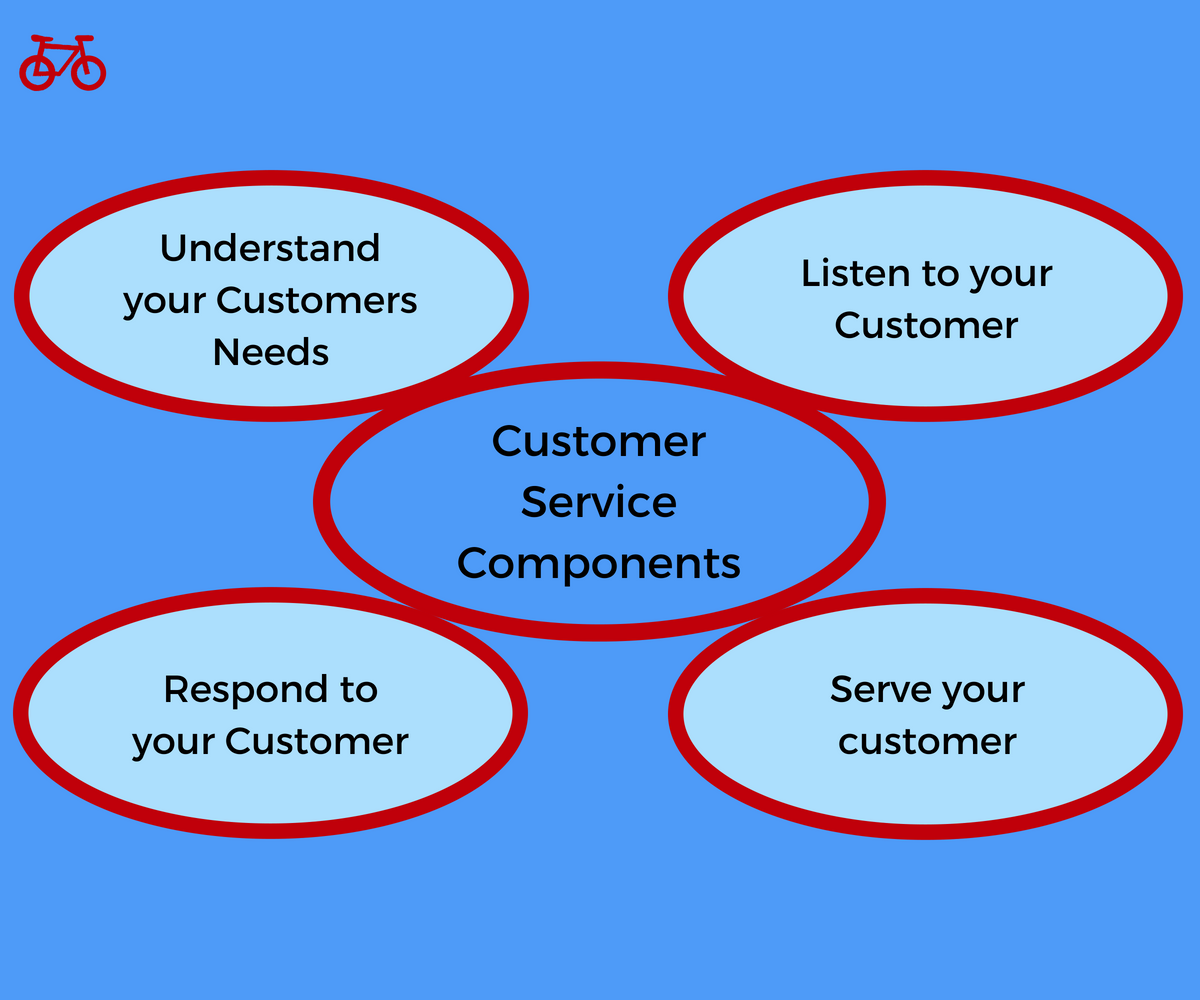
Understand your Customers Needs
The first component of customer service is understanding the needs of your customer. Everything a company does should revolve around the customer. And, it should align with what the customer needs.
That being said, understanding your customers’ needs and being acutely aware of them are essential to good customer service. This component allows you to build a customer service process and system that customers use and walk away satisfied with your company.
Listen to your Customer
In order to understand your customer, you need to listen to them. This is a fundamental component to customer service. It provides the insights needed to understand your customer’s needs. It also gives you the foundation to respond and serve your customers in the best way possible.
Listening and comprehending what a customer is saying is essential to customer service. It is a cornerstone component.
Respond to your Customer
In order to leave your customer’s satisfied, responding to their needs and requests in a timely manner is crucial.
Responding in a timely manner, as well as responding directly to servicing their needs is critical. This gets a customer in, out, and on with their business. And, when the response is timely and correct, a customer has a positive interaction and experience with your company.
Responding to customers is fundamental to letting them walk away satisfied with their interaction.
Serve your customer
Being customer centric and serving your customer effectively is a key component to good customer service.
Serving the customer is understanding and respecting the role the customer plays in your business. Which, is a large one. This component also encompasses many of the other components.
Serving your customer is crucial. Remember, they make it possible to do what you do.
Process, as a component of the marketing mix has many elements. Most of which focus on delivering your product to the customer, the experience the customer has, then servicing that customer.
While a crucial component when discussing service products, it can be applicable to many other products as well. Process is a component of the marketing mix that has a place in your marketing strategy.
